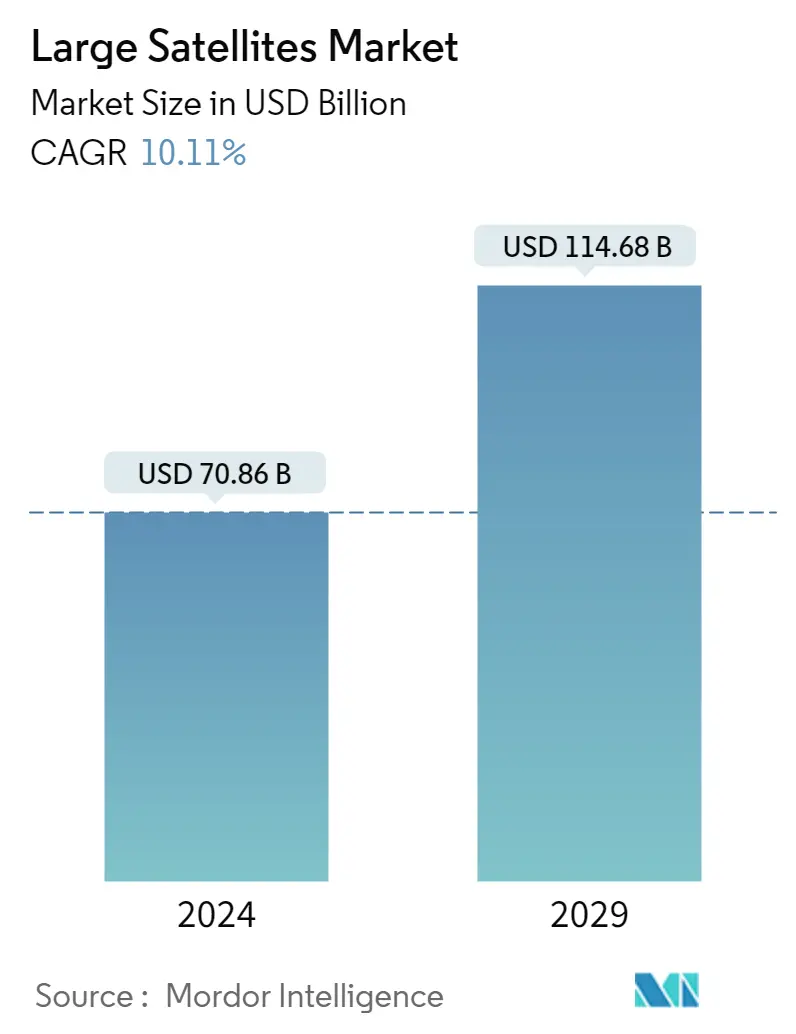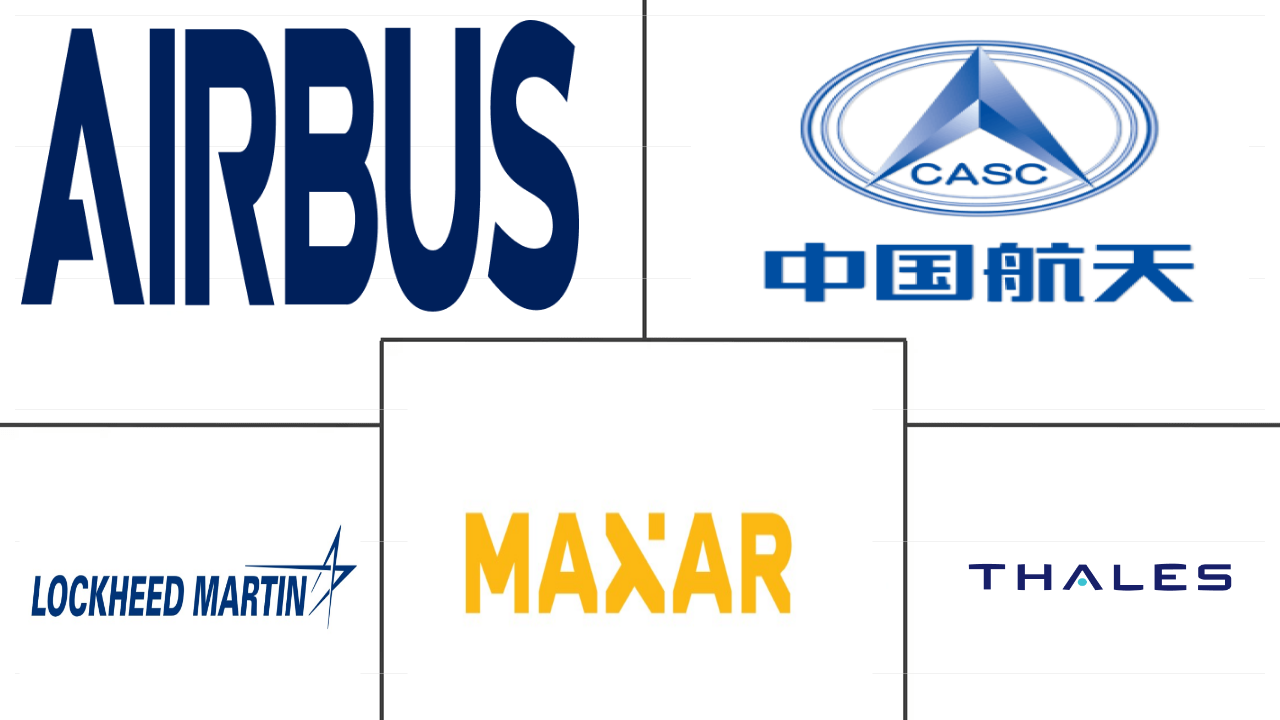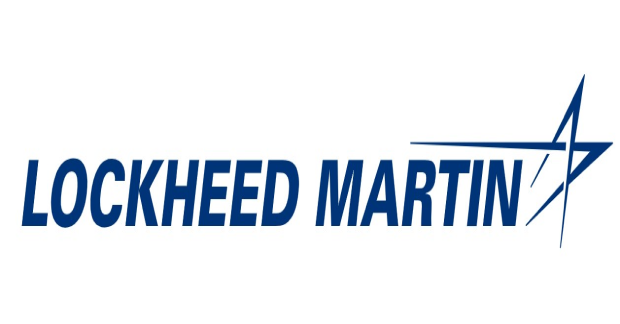Market Size of large satellites Industry

| Icons | Lable | Value |
|---|---|---|
|
|
Study Period | 2017 - 2029 |
|
|
Market Size (2024) | USD 70.86 Billion |
|
|
Market Size (2029) | USD 114.68 Billion |
|
|
Largest Share by Orbit Class | LEO |
|
|
CAGR (2024 - 2029) | 10.11 % |
|
|
Largest Share by Region | Asia-Pacific |
|
|
Market Concentration | High |
Major Players |
||

|
||
|
*Disclaimer: Major Players sorted in no particular order |
Large Satellites Market Analysis
The Large Satellites Market size is estimated at USD 70.86 billion in 2024, and is expected to reach USD 114.68 billion by 2029, growing at a CAGR of 10.11% during the forecast period (2024-2029).
70.86 Billion
Market Size in 2024 (USD)
114.68 Billion
Market Size in 2029 (USD)
-1.63 %
CAGR (2017-2023)
10.11 %
CAGR (2024-2029)
Largest Market by Propulsion Tech
73.93 %
value share, Liquid Fuel, 2022
Due to its high efficiency, controllability, reliability, and long lifespan, liquid fuel-based propulsion technology is an ideal choice for space missions. It can be used in various orbit classes for satellites.
Largest Market by Application
49.16 %
value share, Earth Observation, 2022
Earth observation satellites are used for weather forecasting, forestry mapping, and pollution monitoring. The growing adoption of VAS by private companies and organizations is likely to fuel the growth of satellite-based Earth observation.
Largest Market by Satellite Subsystem
25 %
value share, Propulsion Hardware and Propellant, 2022
The demand for these satellite bus & subsystems is driven by the development and launch of mass satellite constellations into space.
Leading Market Player
47.45 %
market share, China Aerospace Science and Technology Corporation (CASC), 2022

China Aerospace Science and Technology Corporation is the largest player in the global large satellites market. CASC offers a diverse range of launch vehicles and adopts a competitive pricing strategy to attract customers across the world.
Second Leading Market Player
19.19 %
market share, Lockheed Martin Corporation, 2022

Lockheed Martin is the second leading player in the global large satellites market. It has a strong product portfolio for military satellites. The company's civil and military customers include USAF, the US Navy, DARPA, NASA, and NOAA.
LEO segment leads the market’s growth with a market share of 57.9% in 2029
- Over the past decade, large satellites have been launched in GEO. GEO occupied a market share of 79.8% in 2017. These satellites cost more, and their life span is on a higher side. Manufacturers spent large amounts of money to launch and deploy these satellites. However, with the advancements in technology, the cost of launching and developing satellites has been reduced over the past 3 to 4 years. Because of this, the viability of manufacturers to launch a large satellite in LEO also increased at a much larger pace.
- Depending on the type of application or mission, a particular satellite or entire satellite constellation is launched in different types of orbit. Different satellites manufactured and launched across all the regions have different applications. For instance, during 2017-2022, out of the 214 large satellites launched, 123, 71, 13, and 7 were placed in GEO, LEO, MEO, and elliptical orbits.
- With respect to the market shares, LEO is expected to lead the segment; it occupies a share of 50.5% in 2023, which is expected to reach 57.1% by 2029. The high market share is because of its proximity and several other advantages triggered by technological developments. GEO has a share of 44.3% in 2023 and is expected to occupy 36.9% in 2029.
- Therefore, the increasing use of satellites in electronic intelligence, Earth science/meteorology, laser imaging, optical imaging, and meteorology departments is expected to drive the demand for the development of satellites during the forecast period.
The increasing number of satellites with long lifespans helps the Asia-Pacific region maintain a substantial market share
- Large satellites are used for a wide range of applications, including communication, navigation, and Earth observation. As the demand for these applications continues to increase, companies are investing in R&D to develop large satellites to meet these needs.
- Large satellites are designed primarily for operational purposes with a long lifespan (between five and 10 years). These satellites are mainly used to carry larger remote sensing payloads or larger numbers of transponders and larger antennas for communication purposes. These operational satellites have redundancy for all major subsystems to support accidental failures in subsystems and extend lifespan. Larger satellites are typically built with radiation-hardened space-grade electronics. They generate more power with larger deployable solar panels to support all subsystems and larger loads. Since large satellites have large solar panels and bodies, they face greater atmospheric drag, generating the need for high-powered propulsion systems. Large satellites generally carry a chemical propulsion system for orbital elevation and attitude correction.
- During 2017-2022, around 200+ large satellites launched were owned by North American organizations and had applications such as electronic intelligence, Earth science/meteorology, laser imaging, electronic intelligence, optical imaging, and meteorology. Asia-Pacific is expected to dominate the market during the forecast period, with a share of more than 60%.
Large Satellites Industry Segmentation
Communication, Earth Observation, Navigation, Space Observation, Others are covered as segments by Application. GEO, LEO, MEO are covered as segments by Orbit Class. Commercial, Military & Government are covered as segments by End User. Electric, Gas based, Liquid Fuel are covered as segments by Propulsion Tech. Asia-Pacific, Europe, North America are covered as segments by Region.
- Over the past decade, large satellites have been launched in GEO. GEO occupied a market share of 79.8% in 2017. These satellites cost more, and their life span is on a higher side. Manufacturers spent large amounts of money to launch and deploy these satellites. However, with the advancements in technology, the cost of launching and developing satellites has been reduced over the past 3 to 4 years. Because of this, the viability of manufacturers to launch a large satellite in LEO also increased at a much larger pace.
- Depending on the type of application or mission, a particular satellite or entire satellite constellation is launched in different types of orbit. Different satellites manufactured and launched across all the regions have different applications. For instance, during 2017-2022, out of the 214 large satellites launched, 123, 71, 13, and 7 were placed in GEO, LEO, MEO, and elliptical orbits.
- With respect to the market shares, LEO is expected to lead the segment; it occupies a share of 50.5% in 2023, which is expected to reach 57.1% by 2029. The high market share is because of its proximity and several other advantages triggered by technological developments. GEO has a share of 44.3% in 2023 and is expected to occupy 36.9% in 2029.
- Therefore, the increasing use of satellites in electronic intelligence, Earth science/meteorology, laser imaging, optical imaging, and meteorology departments is expected to drive the demand for the development of satellites during the forecast period.
| Application | |
| Communication | |
| Earth Observation | |
| Navigation | |
| Space Observation | |
| Others |
| Orbit Class | |
| GEO | |
| LEO | |
| MEO |
| End User | |
| Commercial | |
| Military & Government | |
| Other |
| Propulsion Tech | |
| Electric | |
| Gas based | |
| Liquid Fuel |
| Region | |
| Asia-Pacific | |
| Europe | |
| North America | |
| Rest of World |
Large Satellites Market Size Summary
The large satellites market is poised for significant growth, driven by advancements in technology that have reduced the costs of launching and developing these complex systems. Over the past few years, there has been a shift in the deployment of large satellites from geostationary orbits to low Earth orbits, largely due to the latter's proximity and technological advantages. This transition is expected to continue, with low Earth orbit satellites anticipated to dominate the market share in the coming years. Large satellites serve a multitude of purposes, including communication, navigation, and Earth observation, and are designed for long-term operational use with robust subsystems to ensure reliability. The increasing demand for these applications is prompting substantial investments in research and development, as companies strive to innovate and meet the evolving needs of the market.
The Asia-Pacific region is expected to lead the large satellites market, supported by countries like China, India, and Japan, which have developed comprehensive space capabilities. These nations are investing heavily in space infrastructure, technology, and research, aiming to enhance their position in the global space economy. The market is characterized by a high level of consolidation, with major players such as Airbus SE, China Aerospace Science and Technology Corporation, Lockheed Martin Corporation, Maxar Technologies Inc., and Thales dominating the landscape. These companies are actively engaged in strategic partnerships and contracts to expand their offerings and maintain their competitive edge. As the demand for large satellites continues to rise, driven by both commercial and governmental needs, the market is set to experience robust growth, with significant implications for the global economy.
Large Satellites Market Size - Table of Contents
-
1. MARKET SEGMENTATION (includes market size in Value in USD, Forecasts up to 2029 and analysis of growth prospects)
-
1.1 Application
-
1.1.1 Communication
-
1.1.2 Earth Observation
-
1.1.3 Navigation
-
1.1.4 Space Observation
-
1.1.5 Others
-
-
1.2 Orbit Class
-
1.2.1 GEO
-
1.2.2 LEO
-
1.2.3 MEO
-
-
1.3 End User
-
1.3.1 Commercial
-
1.3.2 Military & Government
-
1.3.3 Other
-
-
1.4 Propulsion Tech
-
1.4.1 Electric
-
1.4.2 Gas based
-
1.4.3 Liquid Fuel
-
-
1.5 Region
-
1.5.1 Asia-Pacific
-
1.5.2 Europe
-
1.5.3 North America
-
1.5.4 Rest of World
-
-
Large Satellites Market Size FAQs
How big is the Large Satellites Market?
The Large Satellites Market size is expected to reach USD 70.86 billion in 2024 and grow at a CAGR of 10.11% to reach USD 114.68 billion by 2029.
What is the current Large Satellites Market size?
In 2024, the Large Satellites Market size is expected to reach USD 70.86 billion.

